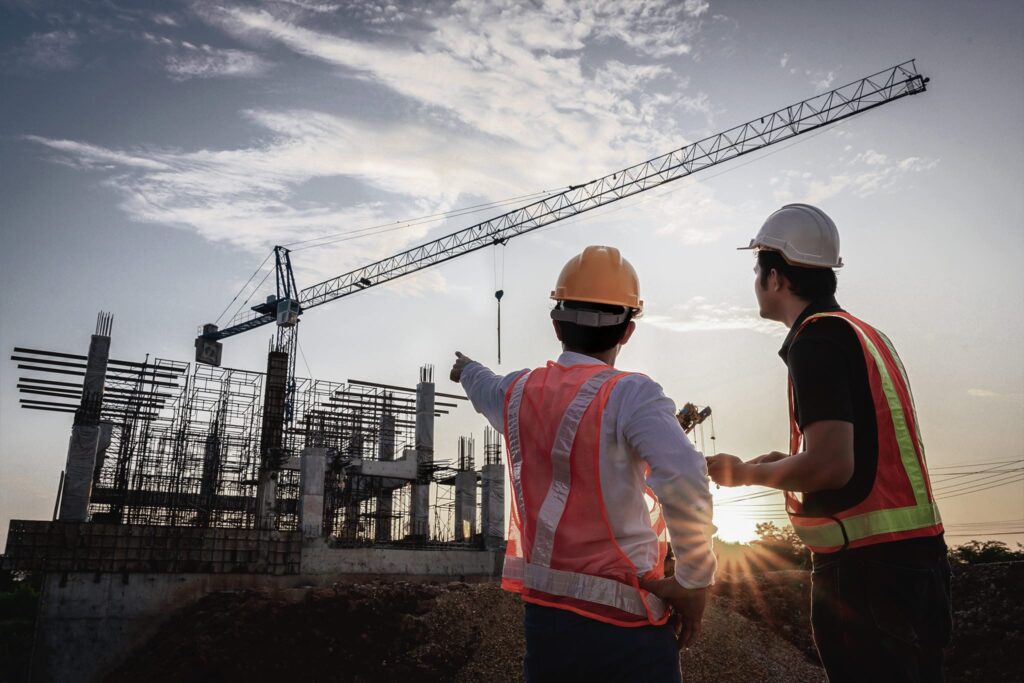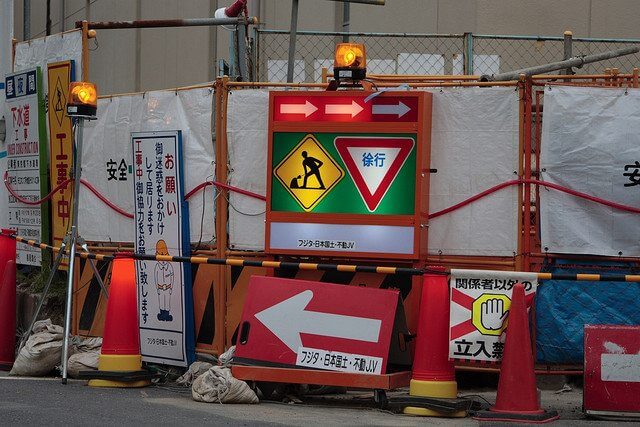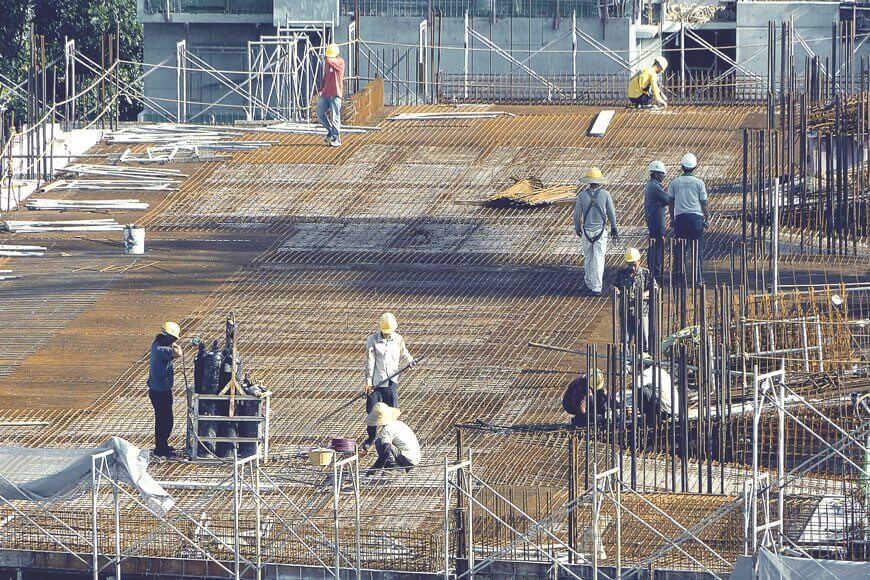Quality is an essential aspect of any construction project and must be a critical consideration from start to finish. The contractor must adhere to the project specifications while considering quality standards, such as ASTM, ANSI, ACI, and AWS. This is where construction quality management comes in.
To that end, project mangers must have a construction quality management system. This is vital to address all the project requirements, identify and fix defects, and deliver quality results for clients. More importantly, it helps to minimise the risk of costly fines due to errors.
Note that delivering quality construction projects carries many benefits, including better customer retention rates, a solid reputation, and a trackable record. This post will delve into construction quality management to help you learn all it entails.
Free eBook: Guide to a digitised QHSE organisation
What is construction quality?
Construction quality defines the standards of a project against the established guidelines and requirements. It considers several factors, including completing the project on time, staying within the set budget, and adhering to its provisions.
Achieving the ideal quality demands effective collaboration, adequate planning, and correct data. Remember that 52% of rework cases are due to miscommunication and poor data. So, contractors must establish a process that imbues professionalism and supports collaboration.
Check out our construction quality management app, LB Aproplan!
Why is construction quality management critical?
Low-quality construction hurts your brand’s reputation and impacts your ability to complete any project. It also wastes materials, resources, and time as you might need to undertake a rework. More importantly, poor-quality construction impacts the project’s safety.
In fact, 6% to 15% of project costs result from poor-quality construction. This underlines the need for a clearly-defined construction quality management plan, which helps to ensure the project meets the client and company standards.
The plan provides quality and verification protocols that help to verify that the project is executed according to the design and requirements. It also provides a quality control checklist to simplify the inspection process and ensure every aspect of the project has been checked.
More importantly, the plan provides steps for correcting inaccuracies and deficiencies, allowing teams to implement solutions while minimising costly implications. It supports the project managers’ role in reviewing each job and devising ways to avoid quality issues in the future.
 How to establish quality management procedures
How to establish quality management procedures
The concept of quality must be ingrained into the process to ensure effective collaboration and successful projects. As such, you must define quality procedures to ensure a smooth transition from planning, commissioning, and execution to completion. Here is what you need to do:
Ensure effective communication
You need a communication system that brings all project stakeholders together. This is vital to ensure everyone is on the same page regarding safety standards, compliance, policy, and project expectations.
One of the key objectives of effective communication in construction quality management is to ensure that all stakeholders are well-informed about safety standards, compliance requirements, project policies, and expectations. By disseminating this information clearly and consistently, the construction team can maintain a safe working environment and adhere to legal and regulatory standards. This helps to mitigate potential risks and liabilities, safeguarding the well-being of workers and minimising the likelihood of accidents or injuries.
Moreover, effective communication fosters teamwork and collaboration among project participants. When stakeholders are encouraged to share their insights, ideas, and concerns, it creates a collaborative atmosphere where diverse perspectives can be considered. This leads to improved problem-solving, innovation, and decision-making throughout the construction process. By valuing the input of every stakeholder, construction projects can tap into the collective knowledge and expertise of the team, resulting in better outcomes.
Note that up to 77% of projects experience delays due to poor communication. So, you need a communication plan that encourages the input of every stakeholder.
Always have a checklist
Having a detailed checklist is a crucial aspect of construction quality management. Project managers should develop comprehensive checklists that cover all project phases and activities, from the planning and design stages to construction and completion. These checklists serve as valuable tools to ensure that every task and requirement is accounted for, and they provide a structured framework for managing quality throughout the project.
Check out our extensive checklists library
Sharing the checklist with all members involved in a specific task is essential. By doing so, it becomes a vital reference material during pre-task planning and discussions. When workers have access to a checklist that outlines their responsibilities and expectations, it promotes clarity and reduces the chances of tasks being overlooked or misunderstood. It serves as a guide that helps them stay organised and focused on their assigned duties.
Moreover, the checklist empowers individual workers and teams to take ownership of their tasks and control the quality of their work. By referring to the checklist, they can ensure that they are meeting all the necessary standards and specifications. It enables them to identify any gaps or potential issues and take appropriate corrective actions. The checklist also provides a mechanism for workers to provide feedback on their progress and communicate any challenges or concerns they may encounter. This feedback loop facilitates continuous improvement and helps in identifying areas for optimization and enhanced quality.
By having a checklist in place, construction projects can establish a standardised approach to quality management. It helps in reducing errors, improving consistency, and minimising rework. The checklist acts as a safeguard to ensure that all necessary steps are followed and critical details are not overlooked. It provides a sense of accountability and helps in maintaining the overall quality of the project.
Create an inspection plan
Creating an inspection plan is a crucial aspect of construction quality management. Inspections play a vital role in monitoring the project’s progress and ensuring compliance with specifications, client requirements, and regulations. It is important to plan quality checks before the project begins and identify the relevant experts who will conduct the inspections. This provides a clear structure and enhances organisation for quality control and assurance throughout each phase of the project.
By implementing an inspection plan, construction projects benefit from a systematic approach to quality management. The plan establishes when and where inspections should take place, ensuring they are integrated seamlessly into the project timeline. Regular inspections enable early identification of any deviations or non-compliance, allowing for timely corrective measures and reducing the risk of rework and delays. Additionally, the inspection plan facilitates communication and collaboration among project stakeholders, ensuring everyone is aware of the inspection schedule and can align their work accordingly.
Having an inspection plan in place enhances the overall quality management process. It provides a roadmap for monitoring and evaluating the project’s progress, allowing for continuous improvement and real-time problem-solving. The plan ensures that inspections are not overlooked, and relevant experts are assigned to conduct them, guaranteeing accurate assessments of the work. By following an organised inspection plan, construction projects can maintain compliance, mitigate risks, and achieve successful project outcomes.
More to read: Construction inspection: the pillar to your construction quality management
Leverage technology
Implementing technology is vital to increasing efficiency, centralising operations, and driving automation. It eliminates paperwork and silo magnets to streamline your processes. In fact, 70% of contractors believe technology can improve safety, scheduling, and productivity.
As such, it makes sense to include technology and software solutions in your construction quality management. For example, construction management software like LetsBuild provides all the right tools for reporting, quality control, coordination, and communication.
Our LB Aproplan app allows you to manage defects, standardised QHSE checklists, and handovers for seamless operations. You can manage project workflows, access reports on the go, and access data-driven insights to stay on top of every quality issue.
Document every deficiency
Documenting every deficiency is a crucial practice in construction quality management. Project managers should establish a system that captures and records all quality incidents that occur during the project. This documentation serves as valuable data for future reference and analysis, allowing the project team to learn from past experiences and implement improvements in construction quality.
To effectively document deficiencies, project managers can categorise them into different groups or types. For instance, incidents can be grouped based on the nature of the issue, such as water filtration problems, failed tests, missed or skipped activities, or major rework requirements. Categorising the incidents helps in organising and analysing the data more efficiently, allowing the team to identify patterns and recurring issues.
The recorded data on quality incidents becomes a valuable resource for driving construction quality improvements. By analysing the documented incidents, the project team can identify trends, common problems, and areas that require attention. They can develop strategies and solutions based on past experiences, implementing preventive measures and corrective actions to avoid similar deficiencies in future projects. The data also helps in establishing benchmarks, setting performance targets, and measuring the effectiveness of quality improvement initiatives.
You might also like: 7 tips for managing health and safety in construction efficiently
Simplify construction quality management
Managing the quality of construction projects involves monitoring different processes and components. For example, you must oversee surveillance, communications, project specifications, workers, suppliers, inspections, and tests.
Manual processes and traditional tools like Excel are ineffective in managing such tasks and deny you the ability to leverage real-time data to ensure quality. Software solutions change this, allowing you to access Gantt Charts, reports, and QHSE forms on a single platform.
This provides you with better insights into your construction projects. You can track every activity and task to ensure quality while leveraging connected data to make sound decisions and drive site performance and productivity — that’s precisely what LetsBuild offers.
Contact us today and learn how our tool can help you ensure optimal construction quality.




